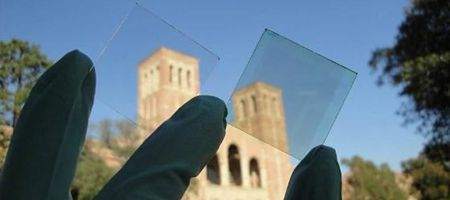UCLA researchers have developed a new transparent solar cell that could allow windows to generate electricity.

Their new type of polymer solar cell (PSC) produces energy by absorbing mainly infrared light, rather than visible light, making them nearly 70 percent transparent to the human eye.
“These results open the potential for visibly transparent polymer solar cells as add-on components of portable electronics, smart windows and building-integrated photovoltaics and in other applications,” says UCLA professor of materials science and engineering Yang Yang
“Our new PSCs are made from plastic-like materials and are lightweight and flexible,” he said. “More importantly, they can be produced in high volume at low cost.”
And the cells could have a wide range of applications, including building-integrated photovoltaics and integrated PV chargers for portable electronics devices.
Previously, attempts at transparent or semitransparent PSCs have tended to be either not transparent enough, or comparatively inefficient. But, says the team, this is because their makers weren’t using suitable polymeric PV materials and efficient transparent conductors.
But the UCLA team has incorporated near-infrared light-sensitive polymer and used silver nanowire composite films as the top transparent electrode. The polymer, they say, absorbs more near-infrared light but is less sensitive to visible light, balancing solar cell performance and transparency at visible wavelengths.
Another breakthrough, they say, is to have made the transparent conductor from a mixture of silver nanowire and titanium dioxide nanoparticles, replacing the opaque metal electrode used in the past. This composite electrode also allows the solar cells to be fabricated economically by solution processing. With this combination, the team’s hit a four percent power-conversion efficiency.






